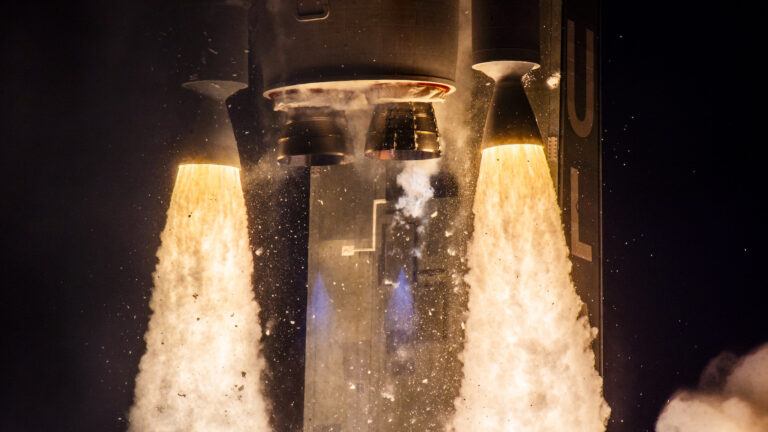When the exhaust nozzle on one of many Vulcan rocket’s strap-on boosters failed shortly after liftoff earlier this month, it scattered particles throughout the beachfront panorama simply east of the launch pad on Florida’s House Coast.
United Launch Alliance, the corporate that builds and launches the Vulcan rocket, is investigating the reason for the booster anomaly earlier than resuming Vulcan flights. Regardless of the nozzle failure, the rocket continued its climb and ended up reaching its deliberate trajectory heading into deep house.
The nozzle fell off one in all Vulcan’s two strong rocket boosters round 37 seconds after taking off from Cape Canaveral House Drive Station on October 4. There have been some indications of an issue with the booster just a few seconds earlier, as monitoring cameras noticed scorching exhaust escaping simply above the bell-shaped nozzle, which is bolted to the underside of the booster casing.
A bathe of sparks and particles fell away from the Vulcan rocket when the nozzle failed. Julie Arnold, a ULA spokesperson, confirmed to Ars that the corporate has retrieved a few of the particles.
“We recovered some small items of the GEM 63XL SRB nozzle that have been liberated within the neighborhood of the launch pad,” Arnold stated. “The crew is inspecting the {hardware} to help within the investigation.”
Below evaluate
The strong rocket booster, or Graphite Epoxy Motor (GEM), was constructed by Northrop Grumman. It is a bigger model of the booster used on ULA’s Atlas V rocket, which Vulcan will change. After the nozzle failure, the broken booster continued to burn because the Vulcan rocket continued on its flight downrange over the Atlantic Ocean, albeit at a decrease thrust degree and with much less effectivity.
Northrop Grumman’s Graphite Epoxy Motors have a dependable observe report. The GEM 63XL variant used on the Vulcan rocket is derived from smaller boosters that flew on the Atlas V, Delta IV, Delta III, and Delta II rockets. The final failure of such a booster, a GEM 40 motor, was in January 1997, when a booster casing ruptured and led to the explosion of a Delta II rocket simply 13 seconds after liftoff.
The October 4 launch was the second check flight of the Vulcan rocket, following a virtually flawless debut launch in January. ULA launched the second Vulcan check flight with out a payload after figuring out Sierra House’s Dream Chaser spaceplane, initially assigned to fly on the second Vulcan rocket, wouldn’t be prepared for launch this yr.
Source link
#ULA #analyzing #particles #recovered #Vulcan #rockets #shattered #booster #nozzle
Unlock the potential of cutting-edge AI options with our complete choices. As a number one supplier within the AI panorama, we harness the facility of synthetic intelligence to revolutionize industries. From machine studying and knowledge analytics to pure language processing and laptop imaginative and prescient, our AI options are designed to reinforce effectivity and drive innovation. Discover the limitless potentialities of AI-driven insights and automation that propel your corporation ahead. With a dedication to staying on the forefront of the quickly evolving AI market, we ship tailor-made options that meet your particular wants. Be part of us on the forefront of technological development, and let AI redefine the best way you use and reach a aggressive panorama. Embrace the long run with AI excellence, the place potentialities are limitless, and competitors is surpassed.











